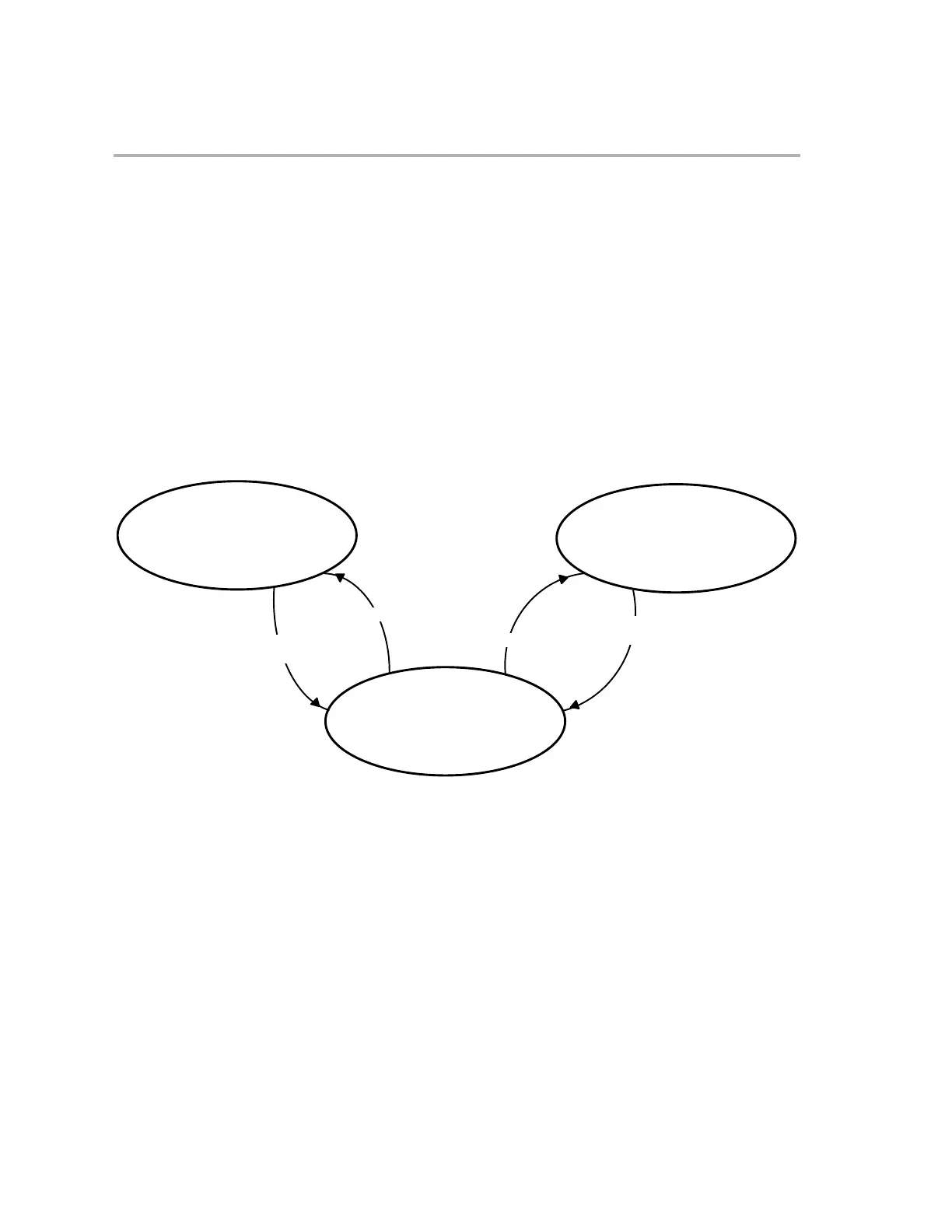Execution Control Modes
7-8
The CPU can service all interrupts in this state. When an interrupt occurs
simultaneously with a debug event, the debug event has priority; however,
if interrupt processing began before the debug event occurred, the debug
event cannot be processed until the interrupt service routine begins.
Figure 7−2 illustrates the relationship among the three states. Notice that the
C28x cannot pass directly between the single-instruction and run states. No-
tice also that the CPU can be observed only in the debug-halt state. In practical
terms, this means the contents of CPU registers and memory are not updated
in the debugger display in the single-instruction state or the run state. Mask-
able interrupts occurring in any state are latched in the interrupt flag register
(IFR).
Figure 7−2. Stop Mode Execution States
Single-instruction state
Run state
Debugger command
Debugger command
After executing
one instruction
Debugger command,
breakpoint, or analysis stop
Debug-halt state
Can service an interrupt
if RUN 1 used
†
Cannot observe CPU
Can service interrupts
Cannot observe CPU
Cannot service interrupts
Can observe CPU
†
If you use a RUN 1 command to execute a single instruction, an interrupt can be serviced in the single-instruction state. If you use
a STEP 1 command for the same purpose, an interrupt cannot be serviced.
